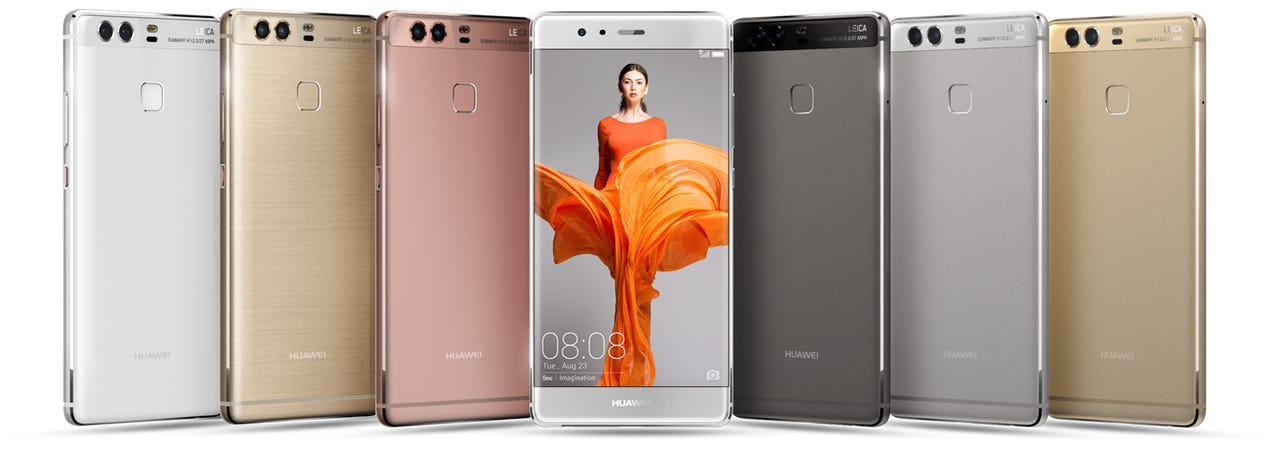Huawei P9: China's flagship smartphone serves up Apple and Samsung's secret sauce


It's what's inside the Huawei P9 that counts.
I've spent the last month using a super-premium smartphone that most people have never heard of. But within three years, its manufacturer is going to be a household name.
Huawei, based in Shenzen, China is hardly a brand that US consumers recognize or associate with any positive feelings whatsoever. It doesn't really exist in consumer mind-share at all.
If anything, the company has been under increased scrutiny in recent years due to congressional allegations of conspiring with the Chinese government to spy on US telecom carriers that use its wireless and switching equipment, as well as potentially violating US export restrictions to countries like Syria and Iran.
However, Huawei is hardly unique in that regard. It joins other Chinese companies like ZTE (that recently dumped its entire leadership team over an Iranian export scandal) which are looking to expand their presence outside of their domestic market, yet can often come in conflict with our own national interests.
Regardless of whether or not what Huawei, ZTE and Xiaomi does is in the best interest of the United States, these companies' products will increasingly appear on our store shelves in the next several years.
I, for one, embrace our new Chinese overlords. Why? Because I won't have to pay top dollar to buy a top quality smartphone sometime in the near future.
Huawei in particular continues to pique my interest because of the three Chinese smartphone giants, it is the one that most closely resembles Apple and of Samsung, from a pure manufacturing and supply chain perspective.
And yes, they're also innovating.
Why would I think that? That's a good question. The Huawei P9, which I have been using as my primary smartphone for the last month -- is not particularly special in the sense that it is doing anything radically better than Samsung or Apple.
On the surface the phone looks like and acts like any other Android Marshmallow-based smartphone that you might find with similar specifications at the $600 price point from Samsung, LG, HTC, or any number of others.
In fact you could say that as an Android device manufacturer overall, it's somewhat behind Samsung in terms of overall product innovation, although the dual-camera setup that the P9 uses may prove to be a prescient one, if you've been following the iPhone 7 rumor mill.
Judging the Huawei P9 just on specifications and price point would be a mistake however. You want to look beneath the surface to understand what this phone actually represents.
What's notable about this phone is that it is the first smartphone offering from a large Chinese manufacturer to be positioned as a flagship for international consumption and that uses virtually all Chinese-made and Chinese-designed components.
Indeed, there are other nice smartphones from China, such as the recently announced ZTE Axon 7 (which we hope to have in-house shortly) or the Meizu Pro 6.
But while manufactured entirely in China, ZTE's Axon 7 still uses Qualcomm-designed SoCs. And while it uses Taiwanese Mediatek-designed Helio X25 SoCs, Meizu hasn't managed to make a phone that is usable on US-based LTE radio frequencies yet.
Neither has Xiaomi, for that matter -- although that could change very shortly.
Huawei and the P9 is different from all of these because the company designs its own SoC for use in the phone -- the HiSilicon Kirin 955, which is one of the first to use the ARM Cortex A72 architecture.
It's a very fast chip, and from the general responsiveness on the P9 when used in typical Android application workloads, it shows.
No, when benchmarked, it isn't quite as fast as the Apple A9-series, the Samsung Exynos 7580 Octa, or even the Qualcomm Snapdragon 820, that's not the point.
The point is that this is the first and only example of a Chinese company that can prove it is approaching the vertical integration capabilities of Samsung, which is the largest component and contract manufacturer in the world.
Today the P9 is comparable in cost to an unlocked international Samsung Galaxy S7 which is probably the undisputed industry premium Android flagship.
That's a high price to pay for a Chinese device from a vendor that hasn't entirely proven its value in the US market yet -- although it has a number of advantages including USB-C charging, a superior camera setup in both the front and rear, and is somewhat lighter.
It should also be noted that the build quality of the P9 is utterly top notch, rivaling Apple's.
There are better value-added phones, including the Google Nexus 6P, which Huawei contract manufactures and costs about $100 less. The aforementioned ZTE Axon 7 will cost about $450 and it is utterly packed with technology for the money.
However the key takeaway is not so much what the P9 costs now, or how many customers adopt it today or migrate from existing Android brands like Samsung, LG or HTC.
The P9 is a technology demonstrator, a measure of what Huawei's future capabilities are as a Chinese manufacturing powerhouse.
There is no question in my mind that we'll see phones from Huawei under its own flagship brand or under the new Honor brand they are currently going to market with in North America, with similar specifications to the P9 at the $300 or less price point within the next year or so.
There is no stopping the Chinese juggernaut. The Korean firms and existing premium smartphone brands have had their day in the sun. That sun is setting.
Today, perhaps Samsung and Apple are your choice premium brands. Five years from now? I'm not so sure about that anymore.
Essential Android smartphones: May 2016
Is China going to steamroller the established premium smartphone and consumer electronics market with high-quality, less-expensive goods? Talk Back and Let Me Know.